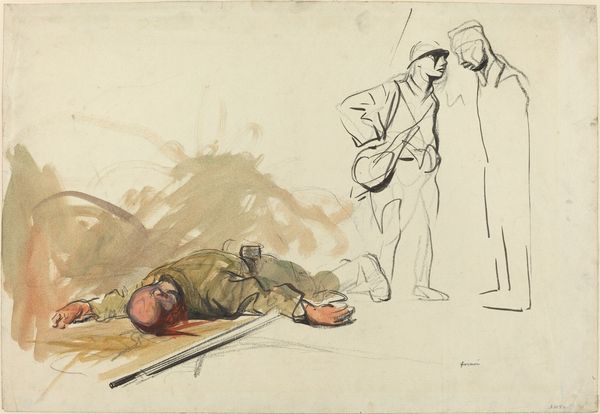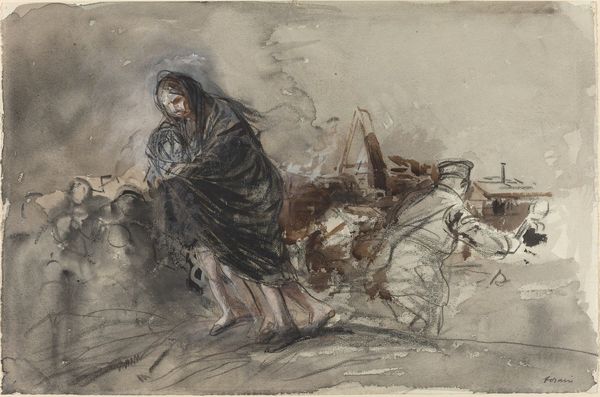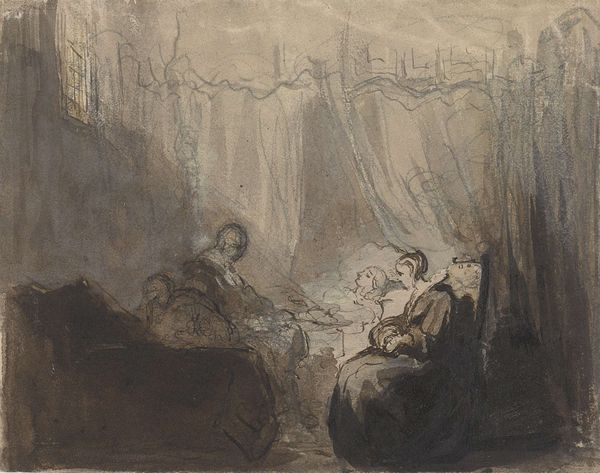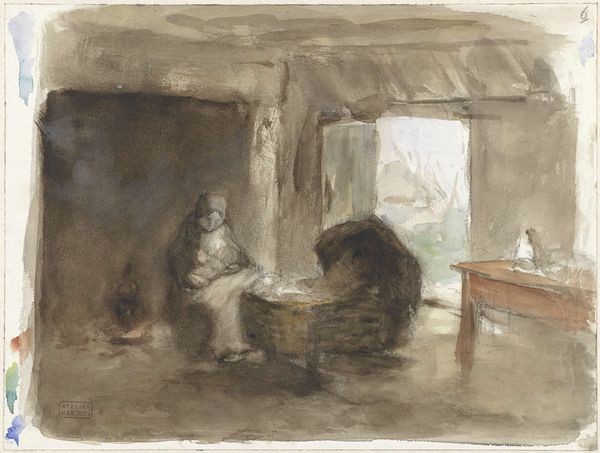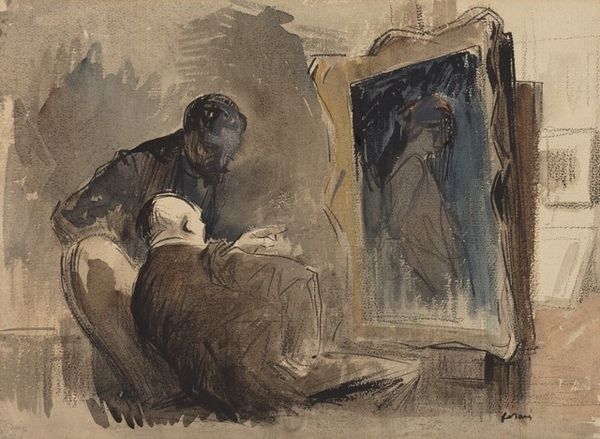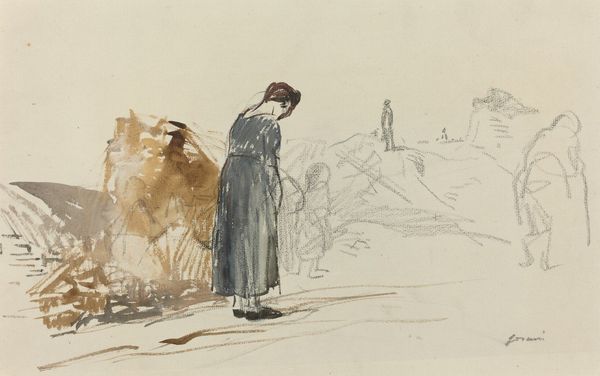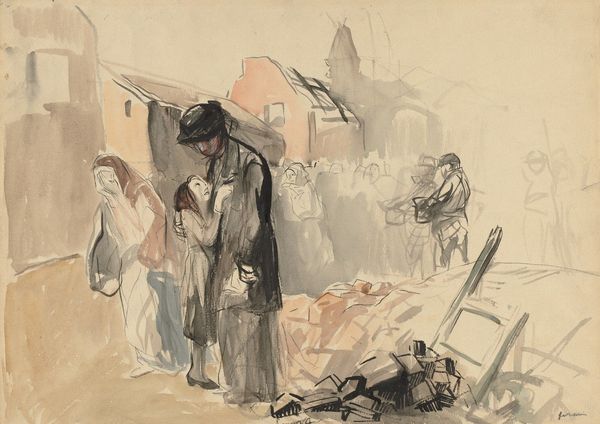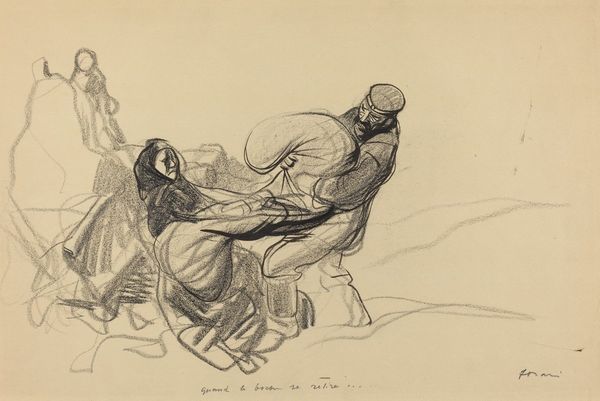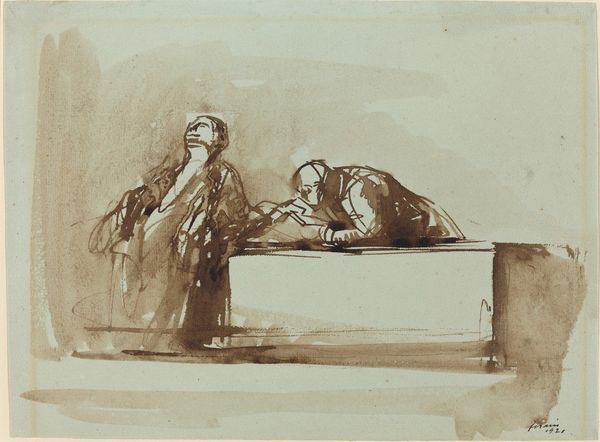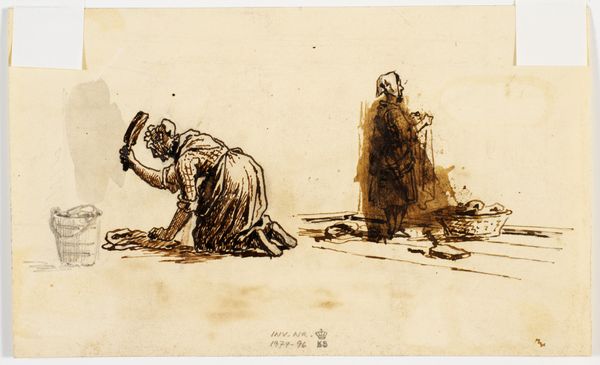
Copyright: Public Domain: Artvee
Curator: Oh, the weariness just rolls off this one, doesn't it? It's Jean-Louis Forain's "Elles etaient a lacets," created somewhere between 1914 and 1919, using a combination of oil paint and watercolor, I think. Quite a blend! Editor: The somber color palette speaks volumes—greys and browns dominate. Is it a hospital scene, perhaps, suggested by the bed and the prone figure? I sense a heavy atmosphere of resignation, almost defeat. Curator: Forain was a master of capturing the darker sides of Parisian life, you know? A kind of sympathetic, if a tad cynical, chronicler. He was a staunch anti-Dreyfusard, which adds another layer to viewing his art... and "Elles etaient a lacets," loosely translated, could mean "They were laced," maybe referring to corsets or a different interpretation, suggesting a kind of binding or constraint, but context is key here. Editor: It absolutely underscores the limited agency women often experienced during this period. The reclining figure appears vulnerable, almost discarded, while the standing figure, cloaked and featureless, evokes a sense of oppressive authority or perhaps detached grief. How can the facelessness invite projections from viewers, engaging in their interpretations about authority, grief or other emotional experiences? Curator: I love how quickly the eye is drawn from one to the other! And consider the technical virtuosity: he uses a minimum of detail, but it still reads, intensely. Like the pair of shoes discarded on the floor. Everyday objects speaking volumes! The artist challenges me to weave stories out of shadows... Editor: And the shoes may function as subtle indicators of socio-economic status, echoing the historical power dynamics within French society during wartime and the early 20th century. It prompts consideration for broader structural conditions, impacting vulnerable bodies within those environments... Curator: True enough, perhaps this makes the painting even more powerful now in ways that he couldn't imagine back then. Makes the experience all that more intense and worthwhile... Editor: I agree! His commentary and art creates dialogue and engagement. What could be a higher purpose?
Comments
No comments
Be the first to comment and join the conversation on the ultimate creative platform.
